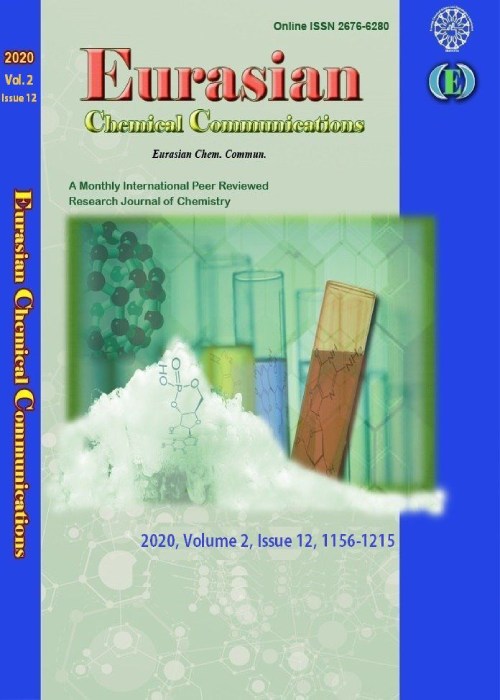Peripherally modified poly (acrylic acid)/ ZnO nanocomposite hydrogel with selective superadsorption properties
Author(s):
Article Type:
Research/Original Article (دارای رتبه معتبر)
Abstract:
In this study, removal of three toxic chemical pollutants, such as crystal violet (CV) dye, tetracycline (TC) drug, and phenol (PH) using sodium alginate-g-poly (acrylicacid-co-sodium, 4-ethenylbenzenesulfonate, hydrate)/Zinc oxide, and SA-g-poly(AC-co-EBS)/ZnO hydrogel composite was prepared by co-polymerization method by addition of free radicals. The hydrogel composite was characterized by TEM, FESEM, and XRD. Removal of laboratory sample aqueous pollutants (dyes, drugs, and phenol) using hydrogel composite to give low absorbance (0.0001) utilizing UV-Vis spectrophotometer for at a chosen wavelength for 2 h. Comparative between ((SA-g-(PAAc-co-EBS)/ZnO, (SA-g-(PAAc-co-EBS), and ZnO NPs) surfaces as adsorbents. The best results of the percentage of removal (E%) of three pollutants arrange in order increasing (SA-g-(PAAC-co-EBS)/ZnO NPs > SA-g-(PAAC-co-EBS) > ZnO NPs), the good results of the percentage removal (E%) of hydrogel composite, (92, 451%, 87.56%, and 82.56%) for CV, TC, and PH, respectively. Likewise, comparative between the amount of Zinc oxide nanoparticles (ZnO NPs) decorated of (SA-g-(PAAC-co-EBS) using (0.05, 0.08, 0.1, and 0.15 g). The good results of the percentage of removal (E%) of three pollutants about 0.1 g ZnO NPs. Re-cyclability and desorption studies indicated the best re-cycling performance of the prepared composite. Based on the results, the prepared hydrogel composites can be useful as a promising, ecological, cost-effective, and efficient material for dyes decontamination. Studies was carry out using several desorption agents at concentration (0.01 N) like HNO3, NaOH, H3PO4, H2SO4, HCl, and water. The hydrogel composite, was regeneration with 100% can be desorbed in diluted hydrochloric acid (0.01 N). The isotherm Freundlich and Langmuir models are also introduced, it has been found that all results follow the Freundlich model in the presence of three pollutants; this nonlinearity is higher when using the Freundlich model.
Keywords:
Language:
English
Published:
Eurasian Chemical Communications, Volume:5 Issue: 11, Nov 2023
Pages:
1023 to 1037
magiran.com/p2641727
دانلود و مطالعه متن این مقاله با یکی از روشهای زیر امکان پذیر است:
اشتراک شخصی
با عضویت و پرداخت آنلاین حق اشتراک یکساله به مبلغ 1,390,000ريال میتوانید 70 عنوان مطلب دانلود کنید!
اشتراک سازمانی
به کتابخانه دانشگاه یا محل کار خود پیشنهاد کنید تا اشتراک سازمانی این پایگاه را برای دسترسی نامحدود همه کاربران به متن مطالب تهیه نمایند!
توجه!
- حق عضویت دریافتی صرف حمایت از نشریات عضو و نگهداری، تکمیل و توسعه مگیران میشود.
- پرداخت حق اشتراک و دانلود مقالات اجازه بازنشر آن در سایر رسانههای چاپی و دیجیتال را به کاربر نمیدهد.
In order to view content subscription is required
Personal subscription
Subscribe magiran.com for 70 € euros via PayPal and download 70 articles during a year.
Organization subscription
Please contact us to subscribe your university or library for unlimited access!


